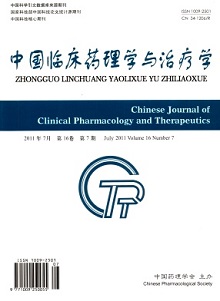Glucomannan inhibit dipeptidyl peptidase 4 (DPP4) activity in the Caco-2 cell
SUN Juan, GE Sheng, SHEN Li, CAO Yun
2011, 16(7):
754-758.
 Asbtract
(
476 )
Asbtract
(
476 )
 PDF (226KB)
(
308
)
References |
Related Articles |
Metrics
PDF (226KB)
(
308
)
References |
Related Articles |
Metrics
AIM: To observe the inhibitory effect of different concentration of Glucomannan on dipeptidyl peptidase 4 activity in the Caco-2 cell at 12 h, 36 h, respectively.METHODS: Seven different concentrations were tested in this experiment, two low concentration groups (60, 240 mg/L), two middle concentration groups (400, 500 mg/L), three high concentration groups(700, 800, 900 mg/L) of Glucomannan, negative control group, and blank control group. Each treatment lasted for 12 hours and 36 hours respectively. DPP4 activity was measured with colorimetric determination of product formation (HGly-Pro-pNA, 0.2 mmol/L, Bachem) in different situations.RESULTS: (1) Compared with the negative control group, the P values of the different concentrations of glucomannan were 0.579, 0.545 (the low concentration groups), 0.349, 0.080 (the middle concentration groups), 0.082, 0.097, 0.429 (the high Concentrations groups) respectively after reacting with Caco-2 cells for a short of time. There were no significant differences detected. (2) At 36 h, the P values were 0.007, 0.002 (the low concentration groups), 0.621, 0.976 (the middle concentration groups), 1.000, 0.940, 0.994 (the high concentrations groups) respectively. The differences between the negative control groups and the low concentration groups have statistical significance (P<0.05).CONCLUSION: There is a trend indicating that the high concentrations of glucomannan (700 mg/L) may inhibit the DPP4 activity in Caco-2 cells at 12 h. However, under the same circumstance, the low concentration of glucomannan (60, 240 mg/L) can inhibit the DPP4 activity in Caco-2 cells in a long term (36 h).


